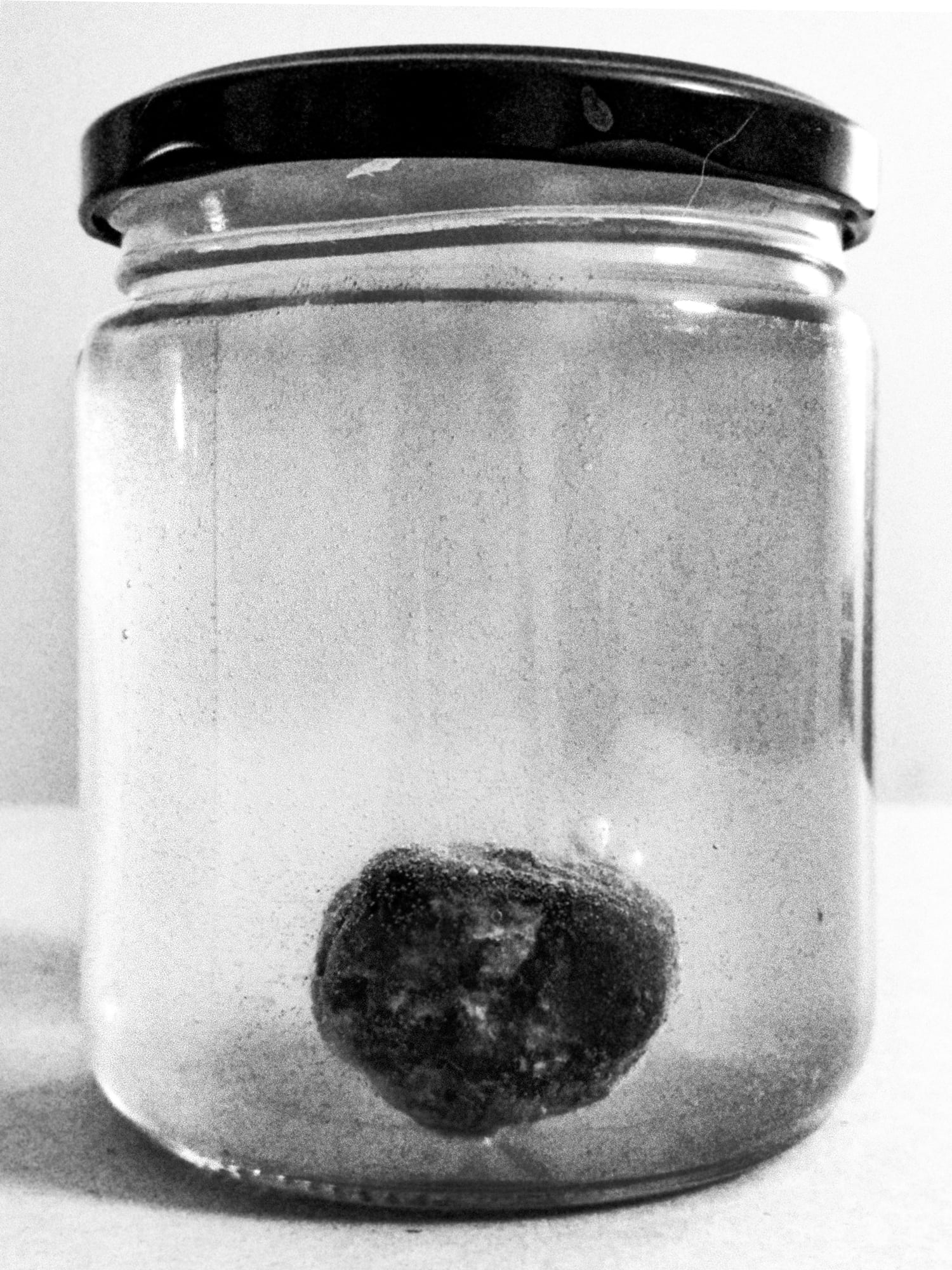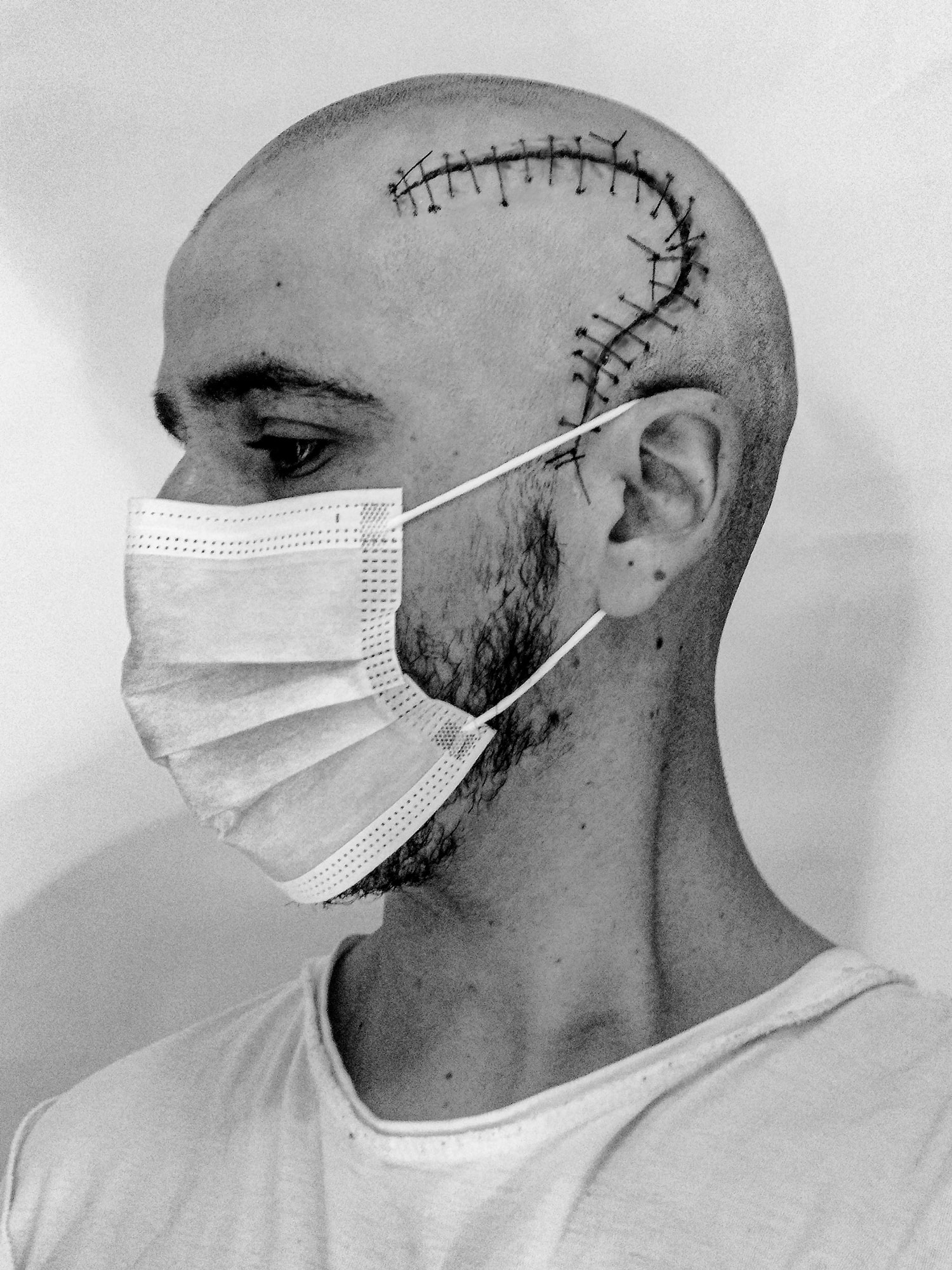
Images at the limit of metaphor
“And if your right-hand causes you to stumble, cut it off and throw it away. It is better for you to lose one part of your body than for your whole body to go into hell,” says
Matthew 5:30, a biblical verse that gives its name to Alfonso Carrera’s conceptual research project, comprises six photographic and objectual art from 2019 to date. This exhibition, inaugurated in May at the Casa del Arte Diego Rivera in Chile, invites us to think about the tensions between the figurative image and metaphors. From this approach, each work is presented as a different approach to the same problem: the representation of psychic or spiritual processes that have no image.
How was the creative process that led you to Matthew 5:30?
It is a work that took shape in 2019 with different experiments that had to do with the plastic dimension of the image and photography. The oldest work that is included in the exhibition is called “Correspondencias entre el cultivo de hongos sobre material fotográfico y la manifestación progresiva de la enfermedad mental”, where I put a self-portrait printed on paper, and I was making a fungus culture on top of it. That material deterioration was recorded for three or four weeks, and finally, there are nine images where you can see a sequence of destruction or distortion of my picture. At that time, I was very interested, and also to this day, in the representation of mental illness in photography and visual art. I had many pictorial references and was also approaching the photographic to those qualities. At that time, I was in the second year of my Plastic Arts career, actively searching and understanding my sensibility and building a kind of personal aesthetics, identifying the ideas that were important to me. In that experimentation process, I felt I was communicating with what I was interested in working on. From that initial work, the other results can function as variations on the theme, shifting from the image to the object.
Alfonso Carrera
Alfonso Carrera
Where does the title come from?
From childhood until adolescence, I was in a conservative and orthodox evangelical school, so from a very early age, I had to read the Bible, where passages are highly crude, violent, and grotesque. What happens when you are a child is that you understand everything very literally, and there is a different way of mentally representing certain stimuli. In adulthood, there are ways of relating to the metaphor that in childhood work much more exaggeratedly, with much more force. They are stimuli that later it is difficult to experience with the same intensity. The verse Matthew 5.30 always fascinated me and accompanied me. I considered it a compelling idea that pushes you towards uprooting and separating yourself, also to destruction or self-mutilation, with an end that is a total commitment to a statement, even if that commitment implies partially destroying oneself. Not necessarily a positive thing, of course. I think we also live in a time where we naturalize sacrifice, and this also has a subtext that one can relate to castration, so there is more than one proposition and more than one reading.

Alfonso Carrera
Where does the title come from?
From childhood until adolescence, I was in a conservative and orthodox evangelical school, so from a very early age, I had to read the Bible, where passages are highly crude, violent, and grotesque. What happens when you are a child is that you understand everything very literally, and there is a different way of mentally representing certain stimuli. In adulthood, there are ways of relating to the metaphor that in childhood work much more exaggeratedly, with much more force. They are stimuli that later it is difficult to experience with the same intensity. The verse Matthew 5.30 always fascinated me and accompanied me. I considered it a compelling idea that pushes you towards uprooting and separating yourself, also to destruction or self-mutilation, with an end that is a total commitment to a statement, even if that commitment implies partially destroying oneself. Not necessarily a positive thing, of course. I think we also live in a time where we naturalize sacrifice, and this also has a subtext that one can relate to castration, so there is more than one proposition and more than one reading.

There is a very moving diptych of photos where you appear with a scar on your head and a tumor preserved in formaldehyde. What can you tell us about those images?
Those photos have to do with what I mentioned at the beginning, with children’s thinking and the relationship with metaphor, with different levels of symbolization capacity. When I was in the creative process, I found that many approaches to the idea were very allegorical or poetic, and I felt that I had to approach the limit of metaphor. I didn’t want to represent something poetically. I wanted to show it. Nor did I want to put together a story of personal redemption because thinking of photography as therapy seems boring to me. I prefer photography as a crisis and symptom, as a direct experience, and I am working more and more based on that and from the experiential. Some works of Latin American authors from photography and the visual arts are similar, where the problem of management or the limit between documentary and fiction are in tension. These photos appear as a solution to represent the idea presently since poetry is lovely, but sometimes it is just a euphemism or a way to distance yourself from what you want to say.



